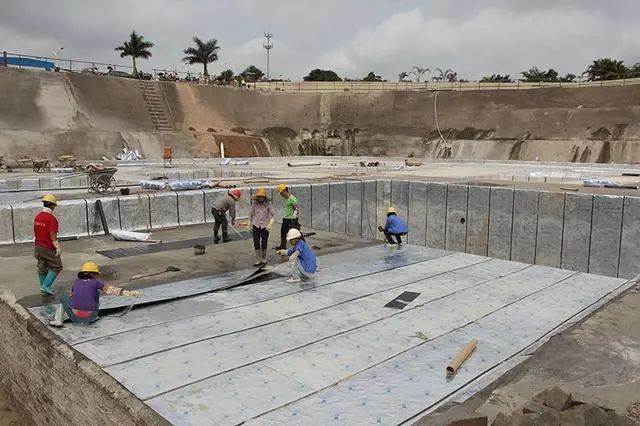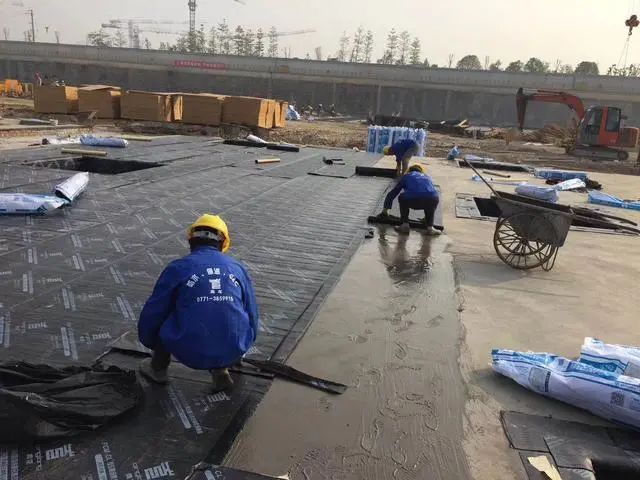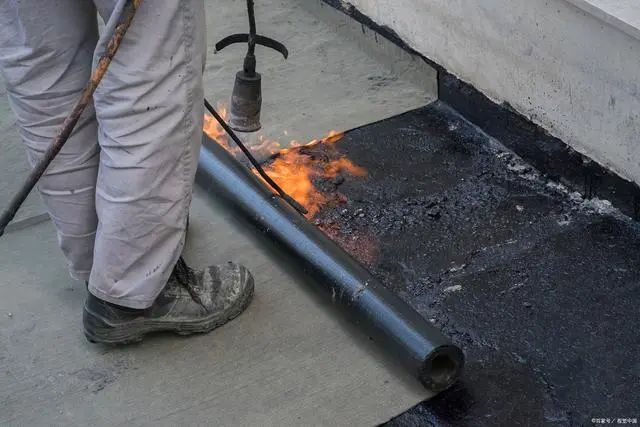In the field of construction and engineering, the choice of the right waterproofing materials is crucial to ensure the durability and safety of structures. Self-adhesive waterproofing membranes and torch-on waterproofing membranes are two common types of waterproofing materials. However, they have different performance, construction methods, and durability. This article is a comparison of the two materials and a discussion of which may be more suitable for certain applications.

Self-Adhesive Waterproofing Membranes:
Self-adhesive membranes are flexible sheets with a self-adhesive backing, typically made of modified bitumen or SBS (styrene-butadiene-styrene) rubber. They are easy to install as they do not require the use of an open flame and are simply adhered to the substrate. The advantages of self-adhesive membranes are as follows
Ease of installation: Self-adhesive membranes do not require torches or other heating equipment. This makes the installation process safer and easier. Workers simply roll the membrane onto the substrate and apply pressure to create a bond.
Good adhesion: The self-adhesive backing provides a strong bond that adheres securely to the substrate to form a reliable waterproof layer. This bonding ability effectively resists water penetration, maintaining the dryness and durability of the structure.
High conformability: Self-adhesive waterproofing membranes can conform to various substrate materials and structural shapes such as concrete, metal, wood, etc. They have good flexibility and elongation to accommodate changes in the substrate and structural deformation.
Torch-On Waterproofing Membranes:
Torch-on membranes are sheets that need to be heated with an open flame during the construction process. They are usually made from modified bitumen or APP (atactic polypropylene). The advantages of torch-on roofing membranes are as follows
High-temperature resistance: Torch-on membranes require heating during installation to soften their surface and bond them to the substrate. This heating process enables the membrane to remain stable in a high-temperature environment and to withstand both sunlight and heat.
Strong durability: Once heated, the torch-on membranes form a strong bond with the substrate, providing long-term protection for the waterproofing system. They also resist aging, UV rays, chemicals, and mechanical damage.
Suitable for complex shapes: Torch-on membranes can conform to the complex shapes and detail areas of the structure during the construction process. The heated membrane flexibly adapts to the waterproofing requirements of special structures such as roofs, basements, and pipework.

Self-Adhesive Vs. Heat-Applied Membranes:
The choice of waterproofing material will depend on the specific requirements of the project and the construction conditions. Here are some points to consider:
Construction Safety: Self-adhesive membranes are safer to use during the construction process as they do not require an open flame. This is an advantage on projects where there are strict safety regulations or when working in a sensitive environment.
Duration and efficiency of the project: Self-adhesive membranes have a faster construction speed as there is no waiting for the heating process, improving construction efficiency and reducing project time. Burn on membranes requires heating which can increase construction time.
Project size and complexity: Self-adhesive membranes are usually a cost-effective choice for smaller and relatively simple projects. Burn-on membranes are better suited for complex structures, curves, and detailed areas.
Budget Considerations: Self-adhesive membranes are relatively inexpensive and easy to install, which reduces the cost of the project to a certain extent. However, torch-on membranes offer better durability and resistance to aging, providing protection for a longer period but at a higher cost.

Summary:
Both self-adhesive and torch-on membranes are common waterproofing materials, each with characteristics and advantages. It's important to have a balance between specific project requirements, construction conditions, safety, project duration, and budget considerations. For projects with simple shapes, focus on construction efficiency, and lower budgets, self-adhesive membranes are good choices. They are easy to install, do not require the heating of an open flame, and have good bonding properties and adaptability. For projects with complex structures, high durability requirements, and a higher budget, torch-on membranes may be more suitable. They can withstand high-temperature environments and provide long-term waterproofing protection. They can also conform to complex shapes and details.
The final choice should be based on the specific needs of the project, considering various factors. During the decision-making process, it's recommended to consult with professional architects, engineers or waterproofing suppliers for more accurate and personal advice. They can provide a professional opinion based on project requirements, budget constraints and feasibility. They can help you make the best choice of waterproofing material. Whether choosing self-adhesive or torch-on waterproofing membranes, ensure that the construction process complies with relevant standards and regulations to ensure the quality and reliability of the waterproofing system.




